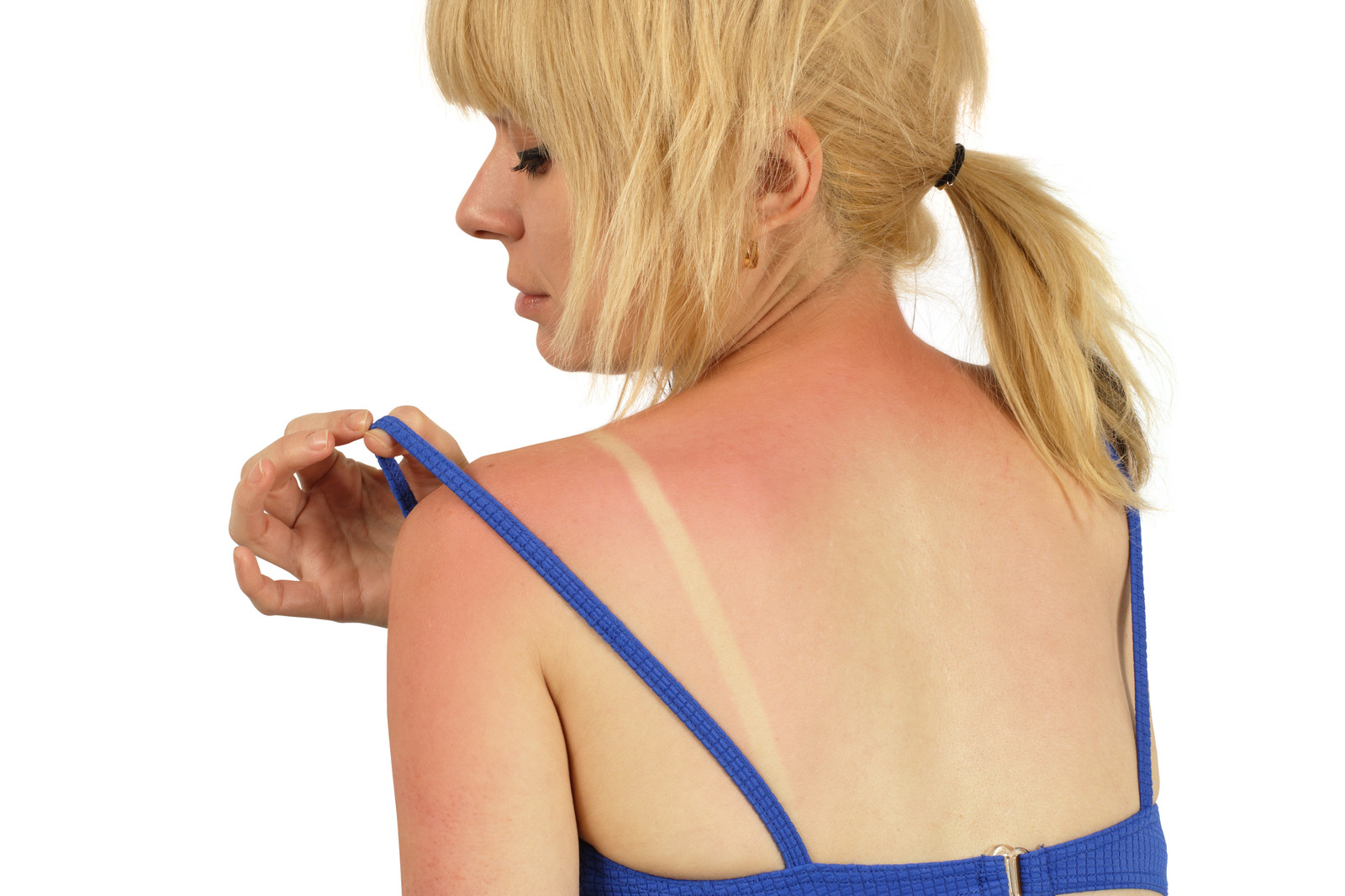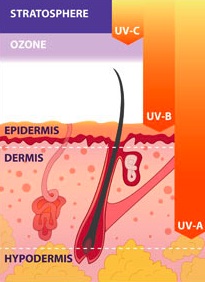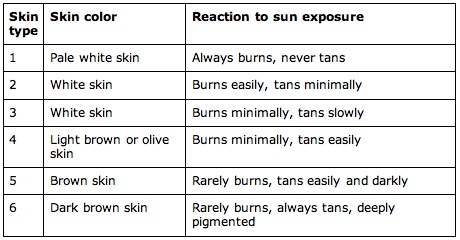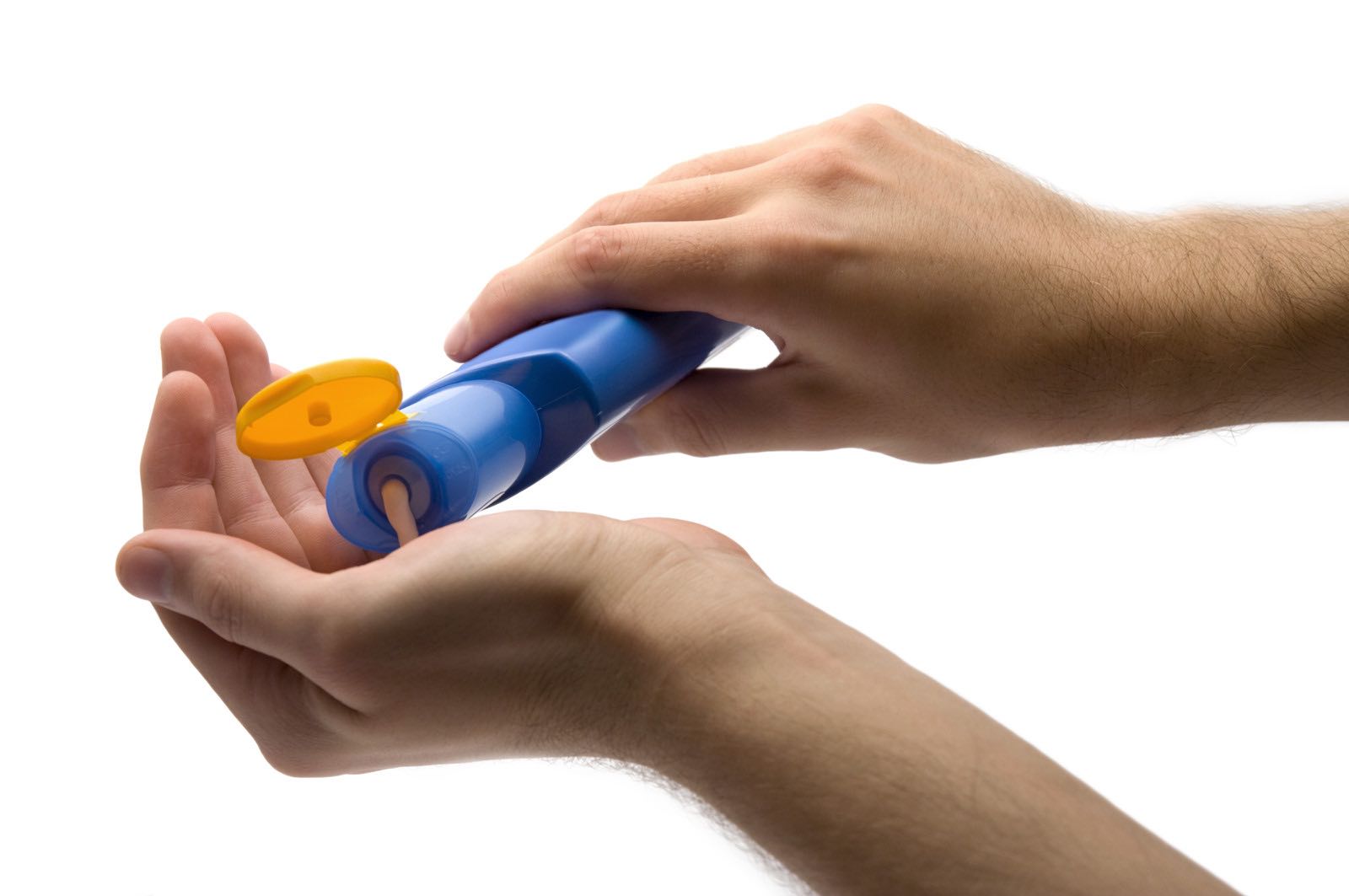Tanning Cream
Tanning cream seems to be predominantly referring to self tanning cream options.
 Tanning cream use prevents sunburn
Tanning cream use prevents sunburnBecoming increasingly popular with the masses, people hope to achieve a golden tan without any need to go outdoors into the direct sunshine and subject themselves to its potentially harmful ultraviolet rays.
Fake tanners, sunless tanners or preparations used to imitate a tan are being sought more and more by people who are aware of the dangers of long term sun exposure and damaging sunburn.
So, if you want to get a darker shade of colour to your skin without having to step foot in a tanning bed or lie out in the sun for hours, you may want to learn more about the innovative sunless, self-tanning products available.
Tanning cream options
 DHA penetrates epidermis layer only
DHA penetrates epidermis layer onlyThere are a few ways to achieve a tan without exposing your skin to the sun and these include:
- tanning cream or stainer - with dihydroxyacetone
- Bronzers - with dyes
- Tan accelerators - with tyrosine and psoralens
- Sunbeds and sunlamps - with artificial UV rays
Dihydroxyacetone
The main ingredient used in tanning creams is DHA, an abbreviation for dihydroxyacetone.
This ingredient is a colourless, 3-carbon sugar that interacts with the skin's outer cells in the epidermis to create a chemical reaction with the skin's amino acids. This ultimately produces a darkening effect on the skin.
Because there is no penetration to deeper layers of the skin and only the surface of the skin is affected, there is no risk at all to the other skin layers.
Besides this, DHA carries less health risks than any of the other available methods and it is the only active ingredient approved by the US Food & Drug Administration (FDA) for sunless tanning purposes.
Tanning cream formulations
 Know the tanning choices for your skin type
Know the tanning choices for your skin typeTanning creams come in a variety of formulations, with many containing special added ingredients of interest such as natural moisturising properties in order to keep the skin healthy, supple and soft, as well as tanned.
There are different concentrations of creams available, so it is important to read the label and know which level of concentration will work best with your particular skin type.
Your final look will depend on the formulation you choose, your application technique, as well as your complexion type but the following points of consideration may help you:
- Choose a concentration of DHA that works for you.
If a new user, start with a low concentration. They are also easier to obtain an even application.
Concentrations range from light, to medium, to dark, coinciding with concentration levels of approximately 2.5% to 10% - Dry skin
Look for moisturizing formulation properties - Oily skin
Look for more of an alcohol based formulation - Colour evenness
Look for the ingredient alpha hydroxy acid (ALA), which aids in the sloughing off of any excess dead skin cells to enable a smoother effect
Tanning creams are even used under medical advice for such conditions as:
- Vitiligo
- Spider veins
- Photosensitivity disorders such as polymorphic light eruption, erythropoeitic protoporphyria, or even drug induced photosensitivities
Tanning cream: Application
 Applying tanning cream
Applying tanning creamTest.
A good habit to get into is testing your skin's specific reaction well beforehand with a small patch test like the inside of your wrist. This is usually a good place as the skin is thinner and relatively more sensitive than the rest of your body and will help to prevent any drastic, full-body negative skin reactions.
Timing.
A colour change is usually noticeable within one hour of application. However, maximum skin darkening can take anything from 8-24 hours to develop. If you want a darker color, you can apply several successive layers every few hours to achieve this.
The resultant tan will last until your dead skin cells rub off, which usually takes 5-7 days. If you wish to keep your tan going, you need to reapply every 1 to 4 days.
Don'ts.
When applying the cream, be sure not to get any in your mouth, eyes or nose. It is also very important to wash your hands after applying as most tanning agents will leave your hands looking orange if you do not wash immediately.
Tanning cream can be used on the entire body, even the face. Although you may want to look for a specific cream that is formulated for the skin on your face.
Sun protection.
Please note that this method of tanning does not affect your melanin, or natural pigment levels and so will not provide any added protection for your skin against the sun.
Although DHA itself does provide a small amount of UV protection, it is wise to choose a cream that contains added sunscreen ingredients if you intend to go into the sun.
Even better, apply a sunscreen over your tanning cream.
Despite the darkening of your skin after using the tanning cream, you are as vulnerable as ever to the sun's potentially harmful UV rays.




New! Comments
Have your say... please leave me a comment in the box below.